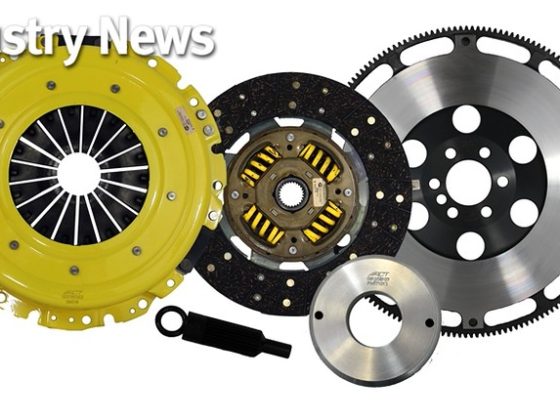
The Physics of Tires
By Vince Ili
In Part I of his Ultimate Guide to Suspension and Handling, Mike Kojima says that one of the biggest ways to improve a car's handling is to improve its tires. I experienced this first-hand recently when I upgraded the wheels and tires on my Mustang.
But how do tires improve your car's handling and performance? In order to discuss that, we need to talk about a little thing called “traction,” also known to us engineering geeks as friction.
What is Friction?
Friction is a force that resists the movement of two objects sliding along each other. Put your hands together and rub them. The resistance to them sliding along each other is friction.
Friction is a complicated thing, but fortunately, we can model it pretty well as a linear function:
F ≤ µ N
This says that the force of static friction (F) is less than or equal to the coefficient of friction (µ) multiplied by the normal force (N). Friction's coefficient varies depending on the two objects that are rubbing against each other. Ice has a low coefficient of friction, whereas rubber has a high one.
The normal force (in the case of tires and cars) is the pressure that the ground is exerting upwards to hold the tire up. If the car is sitting still, it is simply equal to the weight of the car on that tire. If the car is moving, weight transfer from cornering and acceleration will make the normal force increase or decrease.
 |
The Normal force is equal to the weight the object is exerting on the ground. Remember that the force of the weight can change during acceleration and cornering because of weight transfer. |
Now, why does that equation have a less-than-or-equal-to sign instead of an equals sign? That's because we're talking about static friction right now, which occurs between two objects that currently aren't moving. Static friction produces a force that resists movement up to a certain point. Beyond that point, it can no longer prod ce any more resistance, and we begin to deal with dynamic friction. Dynamic friction is always less than static friction, and that's why sliding tires are bad!
To wrap your head around this, think about sliding a heavy box across the floor. Have you noticed that it takes more force to get it moving than it does to keep it moving? That's because dynamic friction is less than static friction. You might be wondering how, exactly, a tire that is rolling along the ground is experiencing static friction (as opposed to dynamic). Take a look at the next diagram.

Assume that this tire is rolling along the ground; it is not sliding. At any given instant in time, the very top of the tire is rotating around the point on the very bottom of the tire that is touching the ground. Because the tire is not sliding, we're dealing with static friction.
Ever wonder why anti-lock braking systems help you control a car better? That's because when the wheels lock, the tires slide along the ground, creating dynamic friction instead of static. ABS (or threshold braking) keeps the tires rotating and keeps static friction.




2 comments
how to find tyre carcass strength of a give tyre, plz give the formulation
That is two broad of a question for even the tire manufactures to answer.